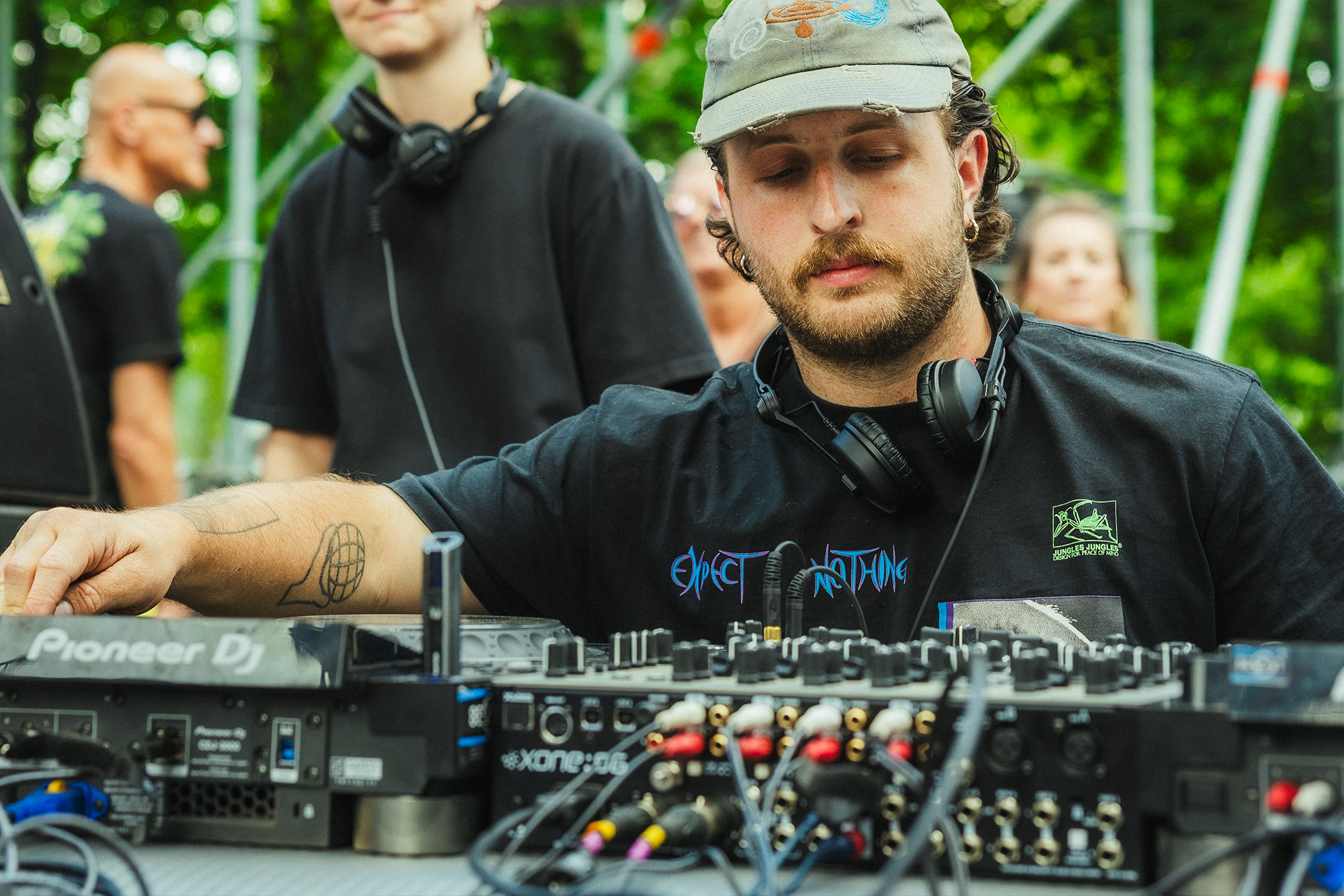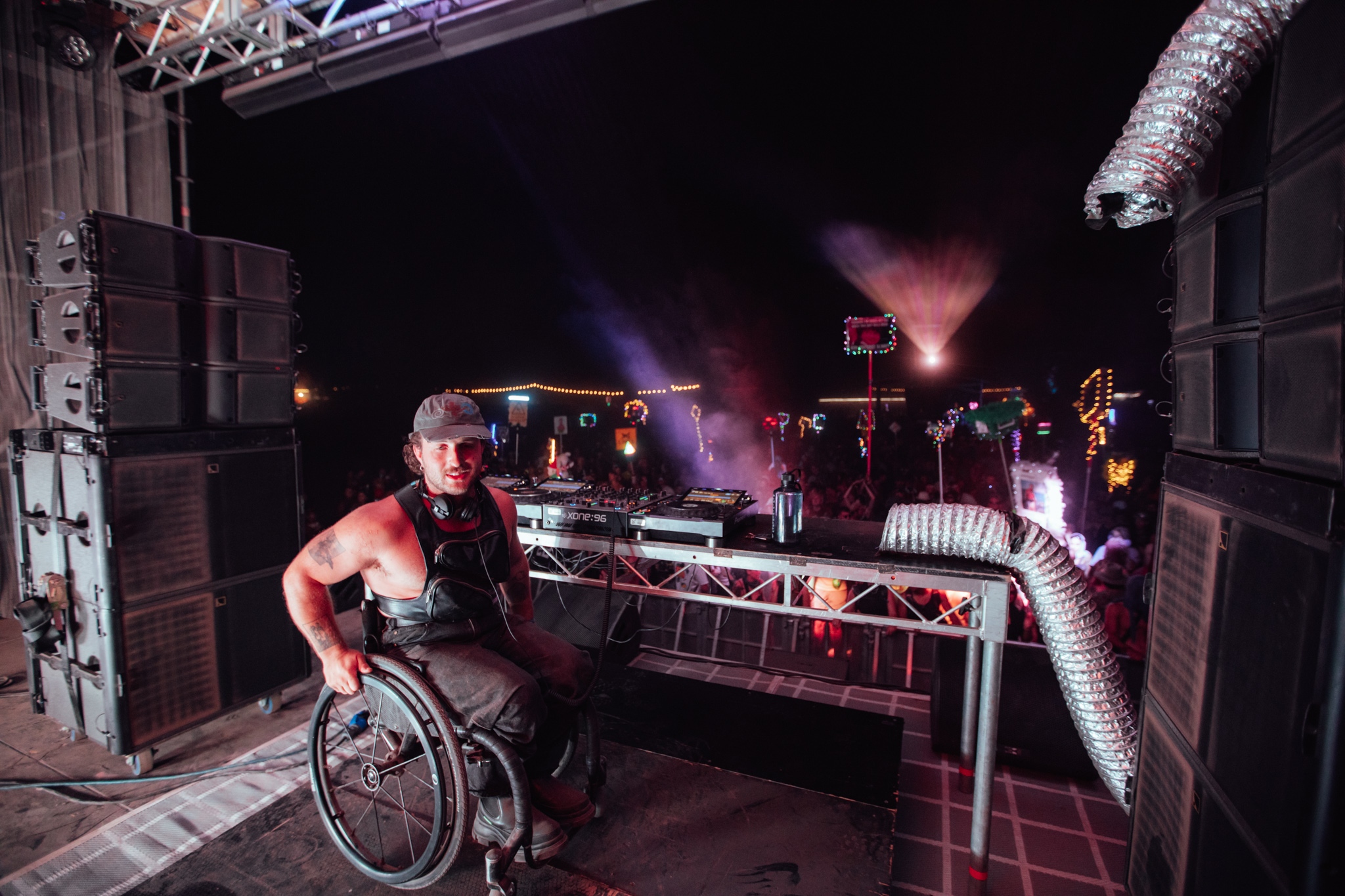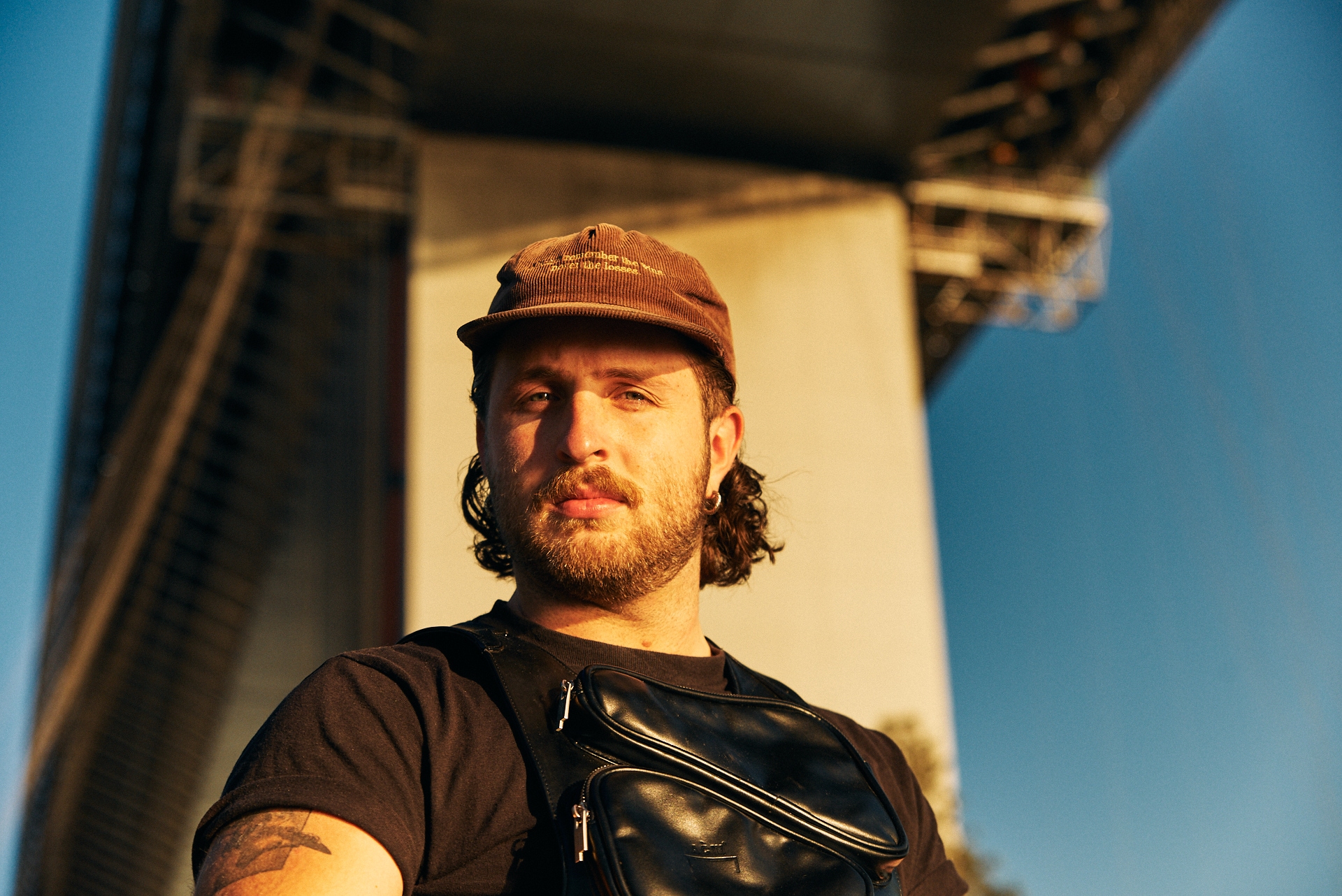 COMMENT
COMMENT
Hasvat Informant's push for dance music accessibility
“I don't think people with disability in a dance music context would expect everything to be perfect for them.”
People living with disabilities are regularly facing adversity in their lives, even outside of the disability they may live with. The Australian government’s proposed changes to the NDIS have seen an uproar by disability advocates, concerned for people whose access to support may be about to get a lot more difficult.
‘Accessibility’ is a conversation being had far more regularly, particularly in the wake of the COVID-19 pandemic. In 2018, it was recorded that an estimated 1 in 6 (18%) of Australians had a disability. While almost a fifth of our population is living with a disability of some kind, accessibility conversations are still lagging behind considerably, and representation in media by people with disabilities too.
Mike Blyth, aka Hasvat Informant is a Naarm/Melbourne-based DJ & producer, known for releases across labels like Amniote Editions, Mama Told Ya and Blue Hour, with a recent tour to Europe seeing him perform at Berghain, Mala Junta, Club Raum and many more. Mike is part of a new wave of techno influencing scenes around the world, who has been a crucial part of Naarm’s scene since he was old enough to drink. He became a paraplegic at 18, and uses a wheelchair.
Fresh off the back of his tour overseas, Mixmag ANZ spoke with Hasvat to understand his experience of dance music accessibility not only in Australia, but around the world.
“My personal experience of disability comes from a wheelchair user perspective ”, Mike was quick to clarify.
The wheelchair is a symbol that we associate with disability. In many ways, it’s one of the most clearly visible signs of someone who has a disability, but is also such a commonly used symbol to denote areas, facilities or infrastructure designed with people with disability in mind.
In a clubbing or dance music context, ‘accessibility’ is, broadly, thought of in a similar way. Wheelchair accessibility is often found mentioned within the bio of an event, or in a post providing directions or venue information. However, conversations around accessibility have shifted to be more inclusive of people with other, less visible disabilities.
Our Carlson for example, a key figure in Naarm’s scene, has been a vocal advocate against strobe lighting for a very long time, citing his own epilepsy and the needs of many like him.
As we began our conversation, Mike made very certain that he was not prepared to speak on behalf of all Australians living with a disability.
“I’m trying to learn more about suitable nightlife accommodations for other types of disabilities, such as those who are neurodivergent or non-verbal, and the specifics and nuances that could be helpful in a dance music context,” he said.
“I was raised in a household with my dear younger sister Emma - who has an intellectual disability. Although I feel aptly aware of the various accommodations she requires in her everyday life - she’s not a dance music fanatic, and I haven’t spent any time out at nightclubs with her (yet)!
In the dance music environment, I only have my own lived experience of physical disability”, he continued. “I’ve done a few accessibility consulting jobs for various venues in town, and I’m always happy to advise about stairs, bathrooms, elevators, all those sorts of things, but there’s many facets that I don’t have the lived experience to speak about. Accommodations surrounding neurodivergence and cognitive disabilities can be a bit more nuanced.”
This nuance was to become a key theme of this conversation.
While one could look to disabled infrastructure around cities like Naarm, train stations, trams, elevators in specific clubs and more, and assume that there was little to be done to improve, the conversation Mike and I were set to have would focus more on the culture of communicating accessibility that was, although becoming more common, still a tension point for many promoters and venues.

“In preparing for a night out, I’ve reached out to venues via social media, email etc and asked ‘hey, do you have any steps on entry? If so, how many are there?’ A reply I recall receiving a few times, ‘no, our venue isn’t wheelchair accessible.’
Ok - but that’s not what I asked.
I’m a relatively active wheelchair user, and with the help of a mate, can navigate a few steps quickly and discreetly.
‘If you’ve got one or two steps I can come by myself, or with a friend and they can boost me up or something, that’s really all I need to know.’
A few hours go by.
‘No, our venue isn’t wheelchair accessible.’
‘Yep okay that’s all good, but really I just want to know if it’s only one or two steps, then I can come.’
Another few hours go by with no response. My night’s over, i’ve missed the show.”
Our government’s policy towards people with disabilities may, understandably, lead one to feel that this is a cultural issue across Australia. Dance music has, the world over, acted as a melting point for more radical political ideas, and ways of accommodating for and understanding other people on the dancefloor, but this understanding isn’t something that Mike feels is explored across Australia’s wide scenes.
“I was regularly going out to clubs before my injury, but didn’t have this perspective of diversity and dancefloor dynamics. ,” he told me. “After my injury, attending these same clubs and events run by the same crews was very different. Often trying to mind my business, dancing right up close to the front speakers, I’d be interrupted by ‘Oh awesome bro you’re a legend, good on you for coming out, for getting up out of bed this morning, so brave and inspiring of you’ - and many other types of sensationalised patronising ‘compliments’.
These comments always made me incredibly uncomfortable. You’re pointing out my differences and singling me out in a room of hundreds. I’m just trying to relax and reintegrate into society, forget about my struggles and switch off for a few hours. You’ve reminded me that I'm an outsider.”
This was, and still very understandably is, a personal experience for Mike. He admitted shortly after making this statement that he knows of other wheelchair users who - especially in the earlier stages of adapting to their injury - found solace and acceptance by being acknowledged in similar situations. .
For Mike, this kind of cultural difference between Naarm’s more ‘underground’ club circuit, and the more mainstream avenues for nightlife and dance music, came down to exposure to disability. “John Smith at the commercial R&B club gets down to the city every two months and sees a bloke in a wheelchair doing wheelies and loses his mind!” he said, half jokingly. “Do a backflip!”.
While generally when we think of accessibility, the physical is the first thing that comes to mind. The number of steps into a venue, the width of its doors, the presence of strobe lighting, loudness of speakers, and much more, only scratch the surface of these accessibility possibilities. Here however, Mike touched on an incredibly poignant question when it comes to dance spaces truly being accessible:
Do people living with a disability feel socially comfortable there?
Comfort is one of the most subjective ideas out there. As Mike himself has said, while these more commercial nightlife situations can make him feel that his presence is to enable someone else to feel like ‘a good person’, for others this may well be a kind of social interaction that they revel in.
One thing was for sure as we discussed this further however, and that was a clear lack of representation in more commercial dance spaces.
“The crowds [in more underground scenes] are more exposed to people from different walks of life. I feel locally this is largely driven by many promoters booking fantastic artists from a variety of marginalised backgrounds. The crowd these parties bring often know what it feels like to be repeatedly hassled on a dancefloor, so these punters are a lot more cognisant of those around them. I feel the intent to actively and attentively consume music also plays a part ‘You know, I don't need to single this person out, I'm here specifically to listen to this DJ that I really like, not so much to socialise or converse, and that person with a disability could very well be doing that too,’” he said.

Mike pointed out however, that artists living with a disability aren’t always ‘identifiable’ as such. So too, leaning into one’s disability may leave them feeling that they’re being booked largely because of that disability. “I don’t try to hide it. You can see it on my socials, I talk about it in regard to dance music accessibility, but I’m not DJ Wheels or some nonsense like that. I really believe in being taken seriously for my craft.”
The incredibly personal nature of how people living with disabilities might look to interact or be interacted with, isn’t something that requires a simple fix, or the same kind of plan in every environment.
Mike regularly plays gigs in more unregulated spaces, whether in more remote rural areas or in city-based warehouses off the beaten track, which by their very nature are less accessible than other spaces generally surrounded or filled with more infrastructure. “My favourite parties are the ones that feel underground, dirty ,ad hoc and whatnot, but by virtue, they can't be the most accessible. If we’re talking about ticking all the accessibility boxes, you need revenue, you need money, you need infrastructure to put things in place,” he told me.
In trying to make spaces accessible for everyone, if we’re not doing that, it can, in Mike’s aforementioned experience, be easier for promoters and venues to shy away from saying that they’re accessible in any way. When our conversation turned to being about unregulated spaces, I expected that Mike may well have a cultural critique that may become the norm in a few years’ time.
Instead, he spoke incredibly plainly.
“I don't think people with disability in a dance music context would expect everything to be perfect for them.”
In dance music spaces, filled with the pursuit of freedoms and acknowledgements of many kinds, it can be easy to feel, at least in more progressive spaces, that you need to be certain of your positions or actions in a variety of different politically charged spaces. This statement from Mike, at least for him personally, added an element of learning to the accessibility conversation that isn’t often spoken about.
He went on to say that, “people I'm talking about in the disabled community are aware of the things up against us. We go out to go to a coffee shop and there's a step up the bathroom. We’d take mental note, ‘well, I can have a quick bite there but maybe not a coffee.’ We have the same expectations of the dance music environment.”
In more unregulated environments, Mike is very aware that a ‘lack of expectation’ is, on a wider scale, part of the mystique. A brand new venue, a warehouse, or a secret spot in plain sight is something, in many ways, to be revered by members of the clubbing community who are regularly frequenting the same spaces.
But even the most revered, secretive venues recognise the need to be communicative about accessibility.
“The first time I went to Berghain, I’d emailed them a few days prior, ’hey, is this space wheelchair accessible?’” Mike explained. ”I was like, I couldn't find anything online if it was or wasn't so I just emailed them - they replied succinctly ‘All floors are accessible via elevator and equipped with barrier-free toilets.’ Upon entering I was immediately offered to be shown where all this infrastructure was.”
Australia doesn’t have a Berghain equivalent by any means, but in talking about this culture of openness, Mike and I started to talk more about what accessibility means as a frame of mind.
In Australia, promoters organising events as a profession is a far more difficult undertaking than it is in places like Europe. For that reason alone, the inability or lack of confidence in diving deeply into accessibility becomes a bit more understandable. For Mike though, it isn’t a responsibility of promoters, but venues.
">Sub Club is a regular spot for Mike, and not only because the bookings are to his liking.
Mike was instrumental in the creation of Sub Club’s Venue Accessibility Plan, which includes a wide variety of information designed to help people with disabilities travelling to, from and inside the venue.
Venue maps, photos of bathrooms, lifts, steps, all information designed to be as transparent as possible for people who aren’t able to simply trust that a space will be accessible for them.
While Sub Club is, for Mike, the standard level of communication that venues should be taking, that level of care is often, unfortunately, a financial decision.
“Over here in certain venues, the people helping you out in the night or the venue manager, or the social media manager, this might be their week to week job and do something else here and there,” Mike empathised.
As it is right now, while there are a series of venues and promoters, like Naarm’s Sub Club or Eora’s late ATHLETICA openly communicating about accessibility, much of the conversation is being left for others to pick up.
When no one feels responsible, everyone waits for cues from, well, everyone else.
The real impact of that? People with disabilities being left out, when really all so many people want is to be able to initiate a conversation.
“Really, it’s just a matter of asking people ‘what do you need? How can we help?’”
An open dialogue is, in a world largely defined by the permanent data of statements we leave online, an intimidating concept. What if we’re wrong? What if we say the wrong thing?
What if we learn something?
Mike is confident that, although there’s lots of work to be done, we’re headed in the right direction.
“It’s about small and steady steps. The thing that I’m advocating for and pushing for is this kind of communication, people including access notes in their event bios.
I’ve been seeing a lot more promoters coming to the cause, which is really nice.
The first and foremost consideration should be communication. If you're running a party, you best know the venue that you're dealing with, so that if people with disabilities reach out, you can try and make sure they have all the knowledge to plan their night accordingly.”
-
Find Hasvat Informant via his Soundcloud and Instagram.
Jack Colquhoun is the Managing Editor for Mixmag ANZ, find him on Instagram.


